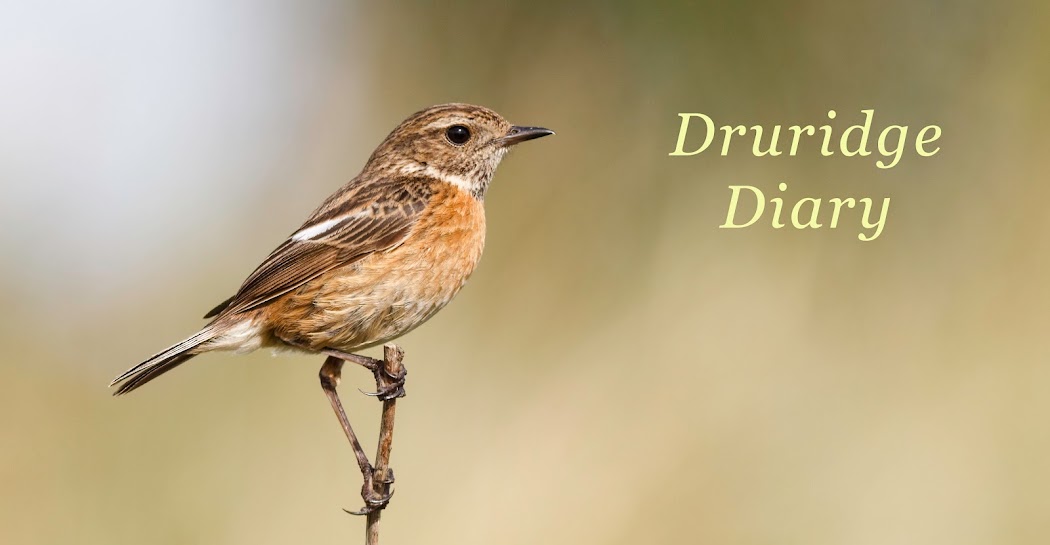Dank - it's a good adjective and is commonly used at this time of year to describe the weather. Today was dank. Janet and I walked around by the farm in hope of seeing Collared Dove, Yellowhammer or even a Merlin but we were without luck, The year-list is still on 176.
Much of the week has been dank. Even with my walks being at lunchtime, there's hardly been enough light to warrant taking the camera out. Yesterday morning started out bright but very cold with a hard frost, but the dank soon set back in and there's been next to no wind for a few days. We tried to catch some finches in the dunes without success, in fact there were hardly any birds at all, the 130-strong flock of birds that I saw on Friday must've been elsewhere. There were at least 30 Twite with Chaffinches, Goldfinch and Linnet.
 |
| Twite feeding in the dunes |
 |
| Same bird |
 |
| Male Stonechat on the fence by the cyclepath |
I was thrown slightly on Friday by a bird on the big pool. It was a duck, bobbing about, fast asleep and I only had my bins.
 |
| Mystery duck |
When it woke and lifted its head it was identifiable as a female Common Scoter - it was just a bit out of context on the big pool.
 |
| Female Common Scoter on the big pool |
Otherwise it's been relatively quiet. There's been a vocal Chiffchaff by the path to the hides all week, it was still there today and Woodcock have flushed every time I've walked through the bushes. Three Ruff were with over 50 Redshank on the field north of the Coal Road on Monday.
I had a look on the sea on Thursday, a nice Great Northern Loon was close in, close enough to see some 'checker-boarding' on its back. A Med Gull went south and about 21 Red-throated Loons were also on the sea. This was the view from the dunes.
 |
| Sunshine on The Cheviot from Druridge through a 400mm lens. Hedgehope is the domed hill to the right of the photo and that's Swarland in the middle-distance. |



























